Autoregulation of topoisomerase I expression by supercoiling sensitive transcription
- PMID: 26496944
- PMCID: PMC4770202
- DOI: 10.1093/nar/gkv1088
Autoregulation of topoisomerase I expression by supercoiling sensitive transcription
Abstract
The opposing catalytic activities of topoisomerase I (TopoI/relaxase) and DNA gyrase (supercoiling enzyme) ensure homeostatic maintenance of bacterial chromosome supercoiling. Earlier studies in Escherichia coli suggested that the alteration in DNA supercoiling affects the DNA gyrase and TopoI expression. Although, the role of DNA elements around the promoters were proposed in regulation of gyrase, the molecular mechanism of supercoiling mediated control of TopoI expression is not yet understood. Here, we describe the regulation of TopoI expression from Mycobacterium tuberculosis and Mycobacterium smegmatis by a mechanism termed Supercoiling Sensitive Transcription (SST). In both the organisms, topoI promoter(s) exhibited reduced activity in response to chromosome relaxation suggesting that SST is intrinsic to topoI promoter(s). We elucidate the role of promoter architecture and high transcriptional activity of upstream genes in topoI regulation. Analysis of the promoter(s) revealed the presence of sub-optimal spacing between the -35 and -10 elements, rendering them supercoiling sensitive. Accordingly, upon chromosome relaxation, RNA polymerase occupancy was decreased on the topoI promoter region implicating the role of DNA topology in SST of topoI. We propose that negative supercoiling induced DNA twisting/writhing align the -35 and -10 elements to facilitate the optimal transcription of topoI.
© The Author(s) 2015. Published by Oxford University Press on behalf of Nucleic Acids Research.
Figures
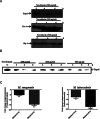
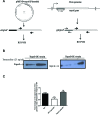
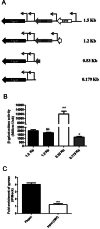
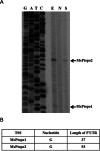
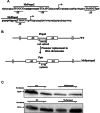
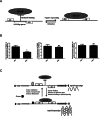
Similar articles
-
DNA supercoiling and transcription in bacteria: a two-way street.BMC Mol Cell Biol. 2019 Jul 18;20(1):26. doi: 10.1186/s12860-019-0211-6. BMC Mol Cell Biol. 2019. PMID: 31319794 Free PMC article. Review.
-
Reduction in DNA topoisomerase I level affects growth, phenotype and nucleoid architecture of Mycobacterium smegmatis.Microbiology (Reading). 2015 Feb;161(Pt 2):341-353. doi: 10.1099/mic.0.000014. Epub 2014 Dec 16. Microbiology (Reading). 2015. PMID: 25516959
-
Distinct Mechanism Evolved for Mycobacterial RNA Polymerase and Topoisomerase I Protein-Protein Interaction.J Mol Biol. 2017 Sep 15;429(19):2931-2942. doi: 10.1016/j.jmb.2017.08.011. Epub 2017 Aug 24. J Mol Biol. 2017. PMID: 28843989 Free PMC article.
-
Regulation of the gyr operon of Mycobacterium tuberculosis by overlapping promoters, DNA topology, and reiterative transcription.Biochem Biophys Res Commun. 2018 Jul 2;501(4):877-884. doi: 10.1016/j.bbrc.2018.05.067. Epub 2018 May 21. Biochem Biophys Res Commun. 2018. PMID: 29775608
-
[DNA supercoiling and topoisomerases in Escherichia coli].Rev Latinoam Microbiol. 1995 Jul-Sep;37(3):291-304. Rev Latinoam Microbiol. 1995. PMID: 8850348 Review. Spanish.
Cited by
-
Manipulation of topoisomerase expression inhibits cell division but not growth and reveals a distinctive promoter structure in Synechocystis.Nucleic Acids Res. 2022 Dec 9;50(22):12790-12808. doi: 10.1093/nar/gkac1132. Nucleic Acids Res. 2022. PMID: 36533444 Free PMC article.
-
DNA supercoiling is a fundamental regulatory principle in the control of bacterial gene expression.Biophys Rev. 2016 Sep;8(3):209-220. doi: 10.1007/s12551-016-0205-y. Epub 2016 Jun 16. Biophys Rev. 2016. PMID: 28510224 Free PMC article. Review.
-
DNA supercoiling and transcription in bacteria: a two-way street.BMC Mol Cell Biol. 2019 Jul 18;20(1):26. doi: 10.1186/s12860-019-0211-6. BMC Mol Cell Biol. 2019. PMID: 31319794 Free PMC article. Review.
-
RNase HI Depletion Strongly Potentiates Cell Killing by Rifampicin in Mycobacteria.Antimicrob Agents Chemother. 2022 Oct 18;66(10):e0209121. doi: 10.1128/aac.02091-21. Epub 2022 Sep 26. Antimicrob Agents Chemother. 2022. PMID: 36154174 Free PMC article.
-
Transcriptional Response of Streptomyces coelicolor to Rapid Chromosome Relaxation or Long-Term Supercoiling Imbalance.Front Microbiol. 2019 Jul 11;10:1605. doi: 10.3389/fmicb.2019.01605. eCollection 2019. Front Microbiol. 2019. PMID: 31354687 Free PMC article.
References
-
- Champoux J.J. DNA topoisomerases: structure, function, and mechanism. Annu. Rev. Biochem. 2001;70:369–413. - PubMed
-
- Wang J.C. Cellular roles of DNA topoisomerases: a molecular perspective. Nat. Rev. Mol. Cell. Biol. 2002;3:430–440. - PubMed
-
- Hatfield G.W., Benham C.J. DNA topology-mediated control of global gene expression in Escherichia coli. Annu. Rev. Genet. 2002;36:175–203. - PubMed
-
- Masse E., Drolet M. Relaxation of transcription-induced negative supercoiling is an essential function of Escherichia coli DNA topoisomerase I. J. Biol. Chem. 1999;274:16654–16658. - PubMed

